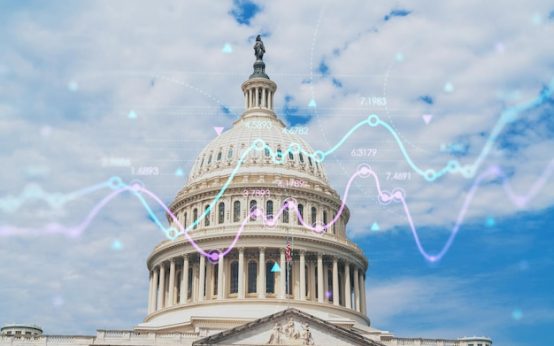Labor union movements and collective bargaining actions are essential for advocating workers’ rights, negotiating better pay and working conditions, and addressing social justice issues while adapting to new challenges in the modern workforce.
Labor union movements and collective bargaining actions have shaped the landscape of workers’ rights for decades. Ever wondered how these movements impact daily life and workplace conditions? Let’s dive in.
Understanding labor union movements
Understanding labor union movements is key to grasping the dynamics of workers’ rights and protections. These movements have a rich history and a profound impact on the workforce today.
Labor unions advocate for better conditions, fair wages, and job security. They act as a collective voice for workers in negotiations with employers. The origins of these unions can be traced back to the late 18th century, when workers began organizing to fight against exploitation.
The main goals of labor unions
Unions strive to achieve several critical objectives for their members. One significant goal is to negotiate better pay and benefits. Unions also focus on creating safer workplace environments.
- Improved wages for workers
- Access to health benefits
- Job security and protection against unfair dismissal
Another important aspect of labor union movements is education and training. Unions often provide resources to help workers enhance their skills, making them more competitive in the job market. Additionally, they work to address issues of discrimination and inequality in the workplace.
Impact of labor union movements
The impact of these movements is felt far beyond the immediate benefits to union members. They play a crucial role in shaping labor laws and standards that affect all workers. For example, initiatives led by unions have led to the establishment of minimum wage laws and workplace safety regulations.
Over time, labor unions have faced numerous challenges, including declining membership and changes in the economy. However, their continued presence helps ensure that the rights of workers are not overlooked. The advocacy of labor unions remains vital for the ongoing fight for workers’ rights in various industries.
The role of collective bargaining
The role of collective bargaining is crucial in shaping the workplace for many employees. This process allows workers to negotiate as a group with their employers, which often leads to better outcomes.
Through collective bargaining, labor unions and employers discuss terms of employment. This includes wages, hours, and working conditions. By negotiating collectively, workers have a stronger voice, enhancing their ability to achieve fair treatment.
Key aspects of collective bargaining
Understanding the main components of collective bargaining can clarify its significance. The process usually involves:
- Negotiating salaries and benefits
- Establishing workplace rules and guidelines
- Defining job security measures for employees
Each of these elements plays a vital role in enhancing the livelihoods of workers. Clear agreements can lead to a more productive and satisfied workforce.
Benefits of collective bargaining
One of the most significant benefits is improved wages. When workers come together, they can negotiate for higher pay than individuals could achieve alone. Additionally, collective bargaining helps ensure job security, protecting employees from sudden layoffs or unfair dismissals.
Another major advantage is the establishment of better working conditions. Unions can advocate for safer environments and greater benefits for all employees. This collaborative approach often leads to a more equitable workplace.
Labor unions also work to address issues like discrimination and harassment in the workplace during these negotiations. These discussions are essential in promoting a fair and respectful work environment.
Key achievements of labor unions

Labor unions have made significant strides in improving the lives of workers through various achievements. These accomplishments have not only shaped employee rights but also transformed workplace standards. Understanding the key achievements of labor unions provides valuable insight into their importance.
One of the most notable achievements is the establishment of the 40-hour workweek. Before labor unions advocated for these regulations, many workers faced excessively long hours without fair compensation. The push for reasonable working hours has greatly improved work-life balance for millions.
Health and safety regulations
Unions have also been instrumental in developing workplace health and safety regulations. The introduction of safety standards helps protect employees from hazardous conditions. Many safety measures we take for granted today exist because of persistent union advocacy.
- Creation of OSHA (Occupational Safety and Health Administration)
- Implementation of safety protocols
- Investments in safety equipment
Additionally, labor unions have significantly influenced wages. Through collective bargaining, unions have successfully negotiated higher wages and benefits for their members. This has raised the standard of living for countless families and narrowed the income gap.
Advocacy for workers’ rights
The advocacy for basic workers’ rights, such as the right to organize and the right to form unions, is another key achievement.
Labor unions have fought against discrimination based on race, gender, and other factors. These efforts have led to a more inclusive workforce where everyone has the opportunity to succeed.
Furthermore, labor unions have played a crucial role in advocating for paid leave and family leave policies. These benefits help workers manage personal responsibilities without fear of losing their jobs.
Challenges facing labor movements today
Labor movements today face numerous challenges that threaten their effectiveness and growth. Understanding these obstacles is essential for anyone interested in the future of labor unions and workers’ rights.
One major challenge is the growing trend of gig economy jobs. Many workers now find themselves in temporary or freelance positions without the security and benefits of traditional employment. This shift has made it harder for unions to organize and advocate for these workers.
Declining membership
Another issue is the decline in union membership across the country. Factors such as legislative changes and anti-union sentiment have contributed to this decline. As fewer workers join unions, the power of organized labor diminishes.
- Increased opposition from employers
- Political challenges to union funding
- Public perception and support for unions
Moreover, many young workers are unaware of the benefits that unions can provide. As knowledge about the role of labor unions fades, the need for education and outreach becomes increasingly important. This gap in understanding presents a barrier to organizing new members.
Legal hurdles
Legal challenges also play a crucial role in complicating labor movements. New laws can limit the ability of unions to strike or organize effectively. The constant battle over legislation influences how unions operate and advocate for their members.
Additionally, unions grapple with internal challenges. This includes addressing issues like leadership transparency, representation, and adapting to diverse workforces. As workers become more diverse, unions need to ensure they are meeting the needs of all their members.
Despite these challenges, labor movements remain vital. They continue to fight for better wages, benefits, and working conditions in a rapidly changing economy. The resolve of labor unions to adapt and overcome these obstacles will shape the future of workers’ rights.
Future of labor unions and collective actions
The future of labor unions and collective actions is an important topic for workers everywhere. As societies evolve, unions must adapt to meet the changing needs of the workforce.
One of the most promising aspects of the future is the potential for digital organizing. With technology, unions can reach more workers than ever before. Social media and online platforms enable rapid communication and mobilization of members. This allows unions to advocate for workers’ rights on a larger scale.
Adapting to new industries
Labor unions will also need to adapt to new industries, especially as the gig economy grows. Many individuals work in freelance or part-time jobs without the security of traditional employment. Unions must develop strategies to support these workers and provide them with benefits.
- Creating pathways for gig workers to join unions
- Negotiating fair compensation and protections
- Providing training and resources for skill development
Additionally, the focus on social justice will influence the direction of labor movements. Unions are increasingly connecting workers’ rights with broader social issues, such as racial equality, gender rights, and environmental justice. By aligning with social movements, unions can strengthen their advocacy and appeal to a wider audience.
Growing membership and support
The future may also see a resurgence in union membership. As workers become more aware of their rights and the benefits of unionization, they may seek to join and support organized labor. Education campaigns and outreach efforts will be vital in this process.
Furthermore, the push for comprehensive labor laws at local and national levels can enhance workers’ rights and empower unions. Changes in legislation can promote fair labor practices and strengthen the ability of unions to negotiate better terms for their members.
In conclusion, the future of labor unions and collective actions remains bright, but it will require flexibility, innovation, and a commitment to justice to navigate the challenges ahead.
FAQ – Frequently Asked Questions about Labor Unions and Collective Actions
What are labor unions?
Labor unions are organizations that represent workers in negotiations with employers to secure better wages, working conditions, and benefits.
How do collective actions benefit workers?
Collective actions empower workers by giving them a stronger voice in negotiations, which can lead to better pay, safer workplaces, and improved benefits.
What challenges do labor unions face today?
Labor unions face challenges like declining membership, the rise of the gig economy, and legal hurdles that can complicate their ability to organize and advocate for workers.
Why is the future of labor unions important?
The future of labor unions is crucial as they play a key role in advocating for workers’ rights, adapting to new market demands, and promoting social justice in the workplace.


 GovernmentInsights: Uncovering Hidden Policy Trends
GovernmentInsights: Uncovering Hidden Policy Trends  Federal Reserve Increases Interest Rate by 0.25%: What It Means for You
Federal Reserve Increases Interest Rate by 0.25%: What It Means for You  Fed Raises Rates Again: Understanding the 0.25% Hike
Fed Raises Rates Again: Understanding the 0.25% Hike